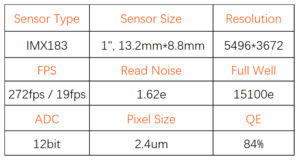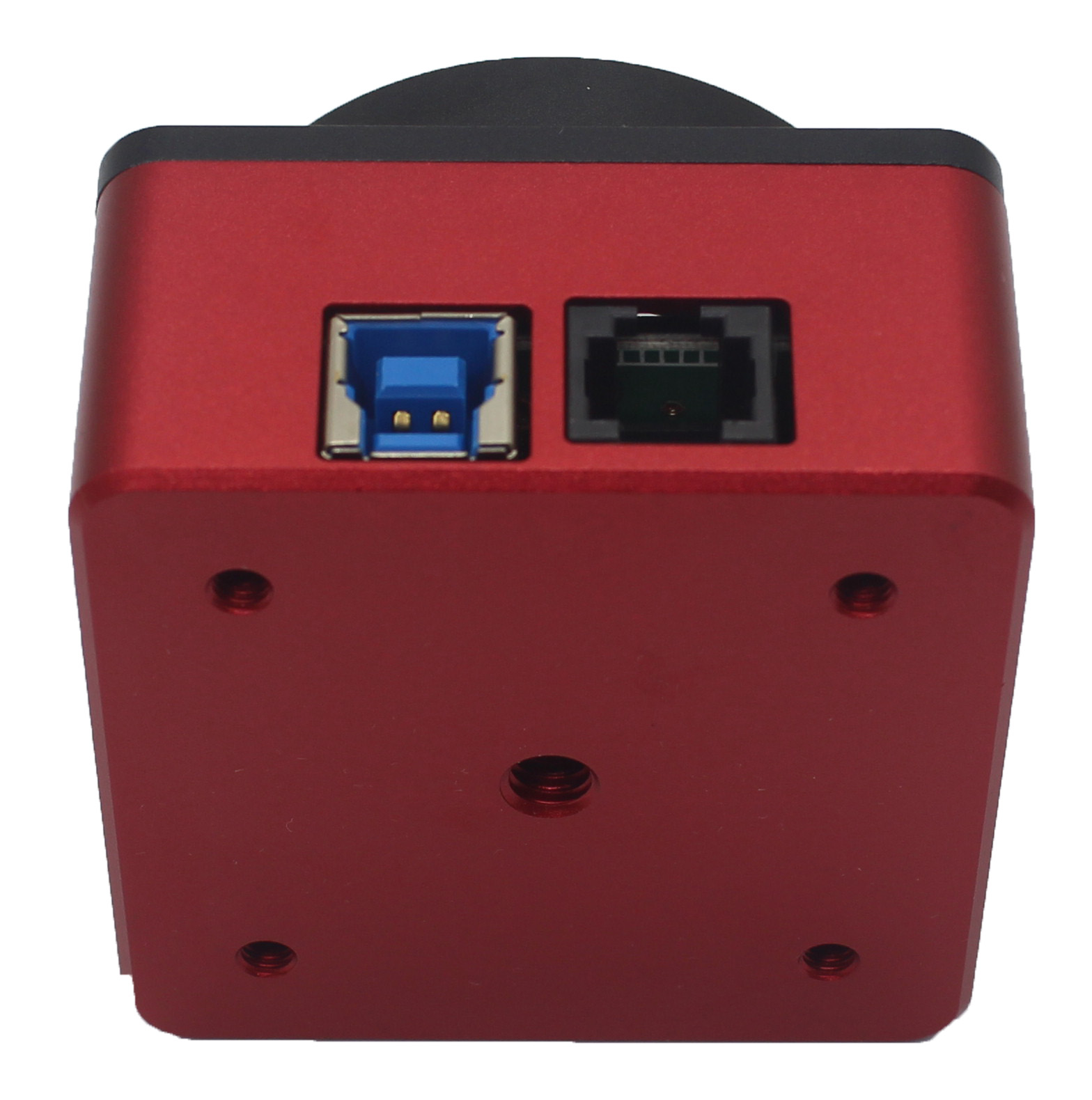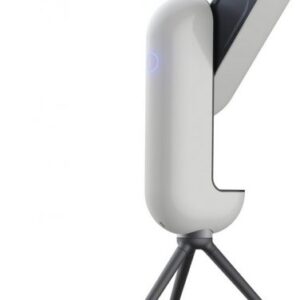Free Shipping
Worldwide Delivery
Receive Gifts
AP183MM(Mono)
£379.00
AP183MM uses a SONY IMX183 CMOS sensor with Exmor and NIR Technology.
The ultra-low read noise is 0.5e- to 3e-, adopt unique hardware amplifier glow control circuit to significantly reduce amplifier glow, high sensitivity in IR range.
Best choice for astronomy and microscopy photography.
Description


Photography Performance
The AP183MC (IMX183CQJ-J, Color) and AP183MM (IMX183CLK-J, Monochrome) use a 1-inch SONY back-illuminated sensor with 20.48 million pixels at 2.4um. The sensor has high sensitivity, QE of 84%, and its read noise as low as one electron. The full well capacity is 15-15100 electrons.
IMX183CQJ-4K-Sensor, High-Speed and High-Picture-Quality, Rolling Shutter, Diagonal 15.86 mm
At an affordable price, this camera is ideal for beginners and experienced astrophotographers. It is bestseller products in astronomic imaging application. Very large scale of full well capacity(15100e), 1.62e read noise@30DB, adopt unique hardware amplifier glow control circuit to significantly reduce amplifier glow, in order to get excellent performance in astrophotography.
The “lucky imaging” method used in planetary imaging uses many short exposures to freeze the effects of atmospheric scintillation. Multiple short exposures instead of one long exposure can better freeze this movement. The stacking software will filter out the images taken during poor moments of seeing, and retain those taken at the good time. Therefore, before the rotation of the planet becomes a factor, people need to take as many images as possible in a short time. Therefore, a high frame rate is very important for planetary imaging.
High QE
Sony’s back-illuminated Exmor R technology creates its excellent deep space performance. The AP183 QE peak reached a significant 84%. Even in the Ha channel, QE still exceeds 60%.
High QE means that more light that enters the telescope and reaches the sensor which is actually used. The peak Q.E. of AP183 is 84%, which is not lower than ~50% in the visible spectrum range. It will use a high percentage of light to reach it and enhance your signal quality.
High Speed
Fast FPS can be used for solar and moon imaging, as well as live viewing/EAA. That high-speed readout can also be used for real-time focusing, true lucky imaging of binary stars and other small celestial bodies, planetary imaging of major planets in the solar system, and so on.
Sensor: 1″ CMOS IMX183CLK-J/CQJ-J
Diagonal: 15.9mm
Resolution: 20.18Mega Pixels 5496*3672
Pixel Size: 2.4μm
Bayer Pattern: RGGB
Shutter:Rolling shutter
Exposure Range: 32µs-2000s
ROI: Supported
Non-volatile memory/On camera storage: Build-in total 192K byte user-accessible space(image size up to 480X320)
Interface: USB3.0/USB2.0
ST4 Guider Port: Yes
Read Noise: 1.6e @30db gain
QE peak: 84%
Full well: 15ke
ADC:12bit
Interface: USB3.0/USB2.0
Adaptor: 2″ / 1.25″ / M42X0.75
Dimensions: Square, side length 66 mm
10Bit ADC
5496×3672 18.5fps
3840×2160 41.02fps
1920×1080 81.10fps
1280×720 117.20fps
12bit ADC
5496×3672 18.5fps
3840×2160 35.82fps
1920×1080 70.28fps
1280×720 102.93fps
Interface Ports
USB 3.0 Port: 5Gb bandwidth ensures AP183MC high speed of 19fps (12bit, normal mode) or 19 fps (10bit, high speed mode) at full resolution(20.18 Mega).
ST4 Port: For for guiding, adapted to auto guide port of mount.
Items in The Packing Box

Mechanical Diagram

Sample Images












Reviews
There are no reviews yet.